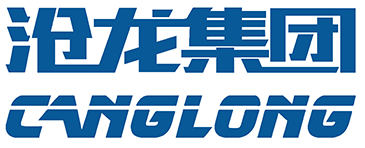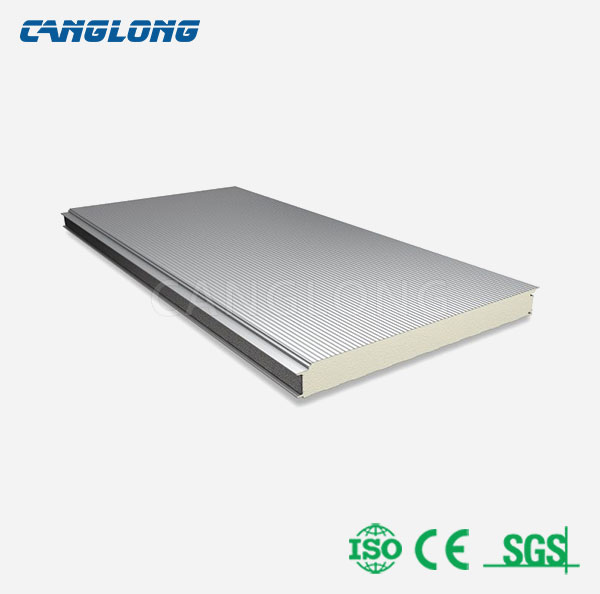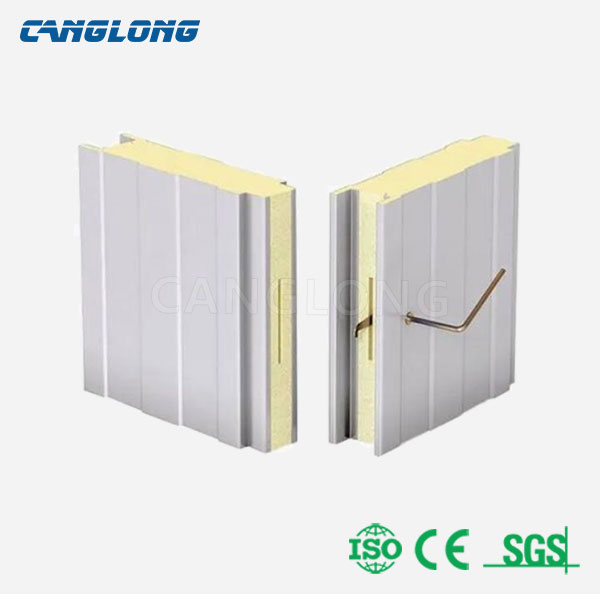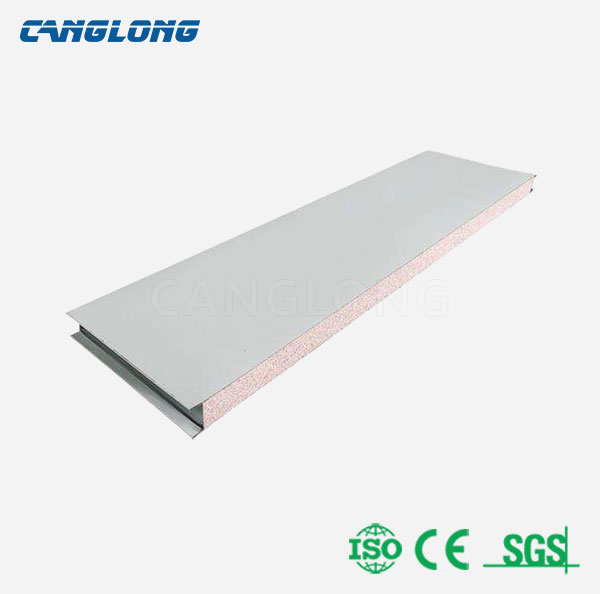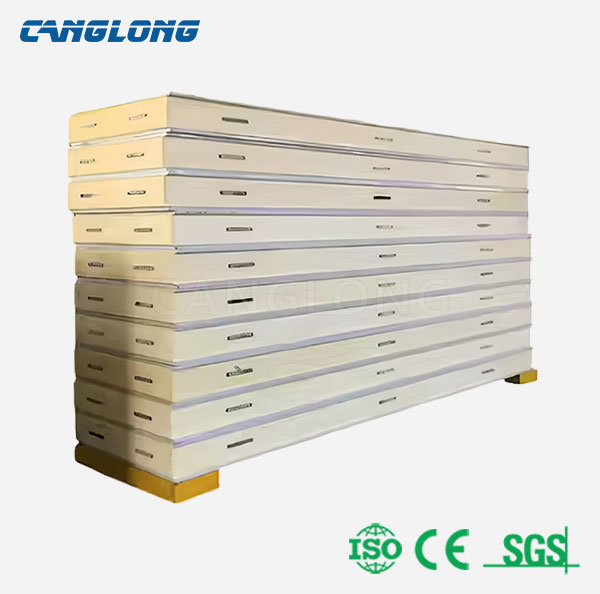
Cold Room Panel
- Effective Width: 960/1150mm
- Core Material Density: 38 to 45kg/m³
- Metal Sheet Thickness: 0.4mm to 0.8mm
- Core Material: PUR/PIR
- Core Thickness: 100 to 200mm
- Thermal Conductivity: <0.022W/(m·k)
- Water Absorption: <0.30kg/m³
- Delivery Time: 7-15 days
- Shipping Port: Qingdao Port
- Payment: T/T, L/C, PayPal
- Service Life: ≥15 years
- Product Origin: Henan, China
Product Details
Cold room panels are generally pre-produced by manufacturers with fixed length, width and thickness. They are one of the key materials in cold storage construction. They are mainly used for heat insulation of cold room to ensure the stability of the internal temperature of the cold storage and the improvement of energy efficiency. Cold room panels are usually composed of internal insulation materials and outer metal plates (such as color steel plates, stainless steel plates, etc.) to meet the construction needs of cold storage with different temperature requirements.
Cold room panel is made of light polyurethane as core material, and both side hard color bond, S.S. or aluminum metal. The advantage of polyurethane is good at heat resistance. The outside metal can prevent heat loss due to big temperature difference between inside and outside of room. So it can increase cold room efficiency and make it energy saving.

Material of cold room panel
The material of cold storage panel mainly includes internal thermal insulation material and outer metal plate.
Internal thermal insulation material: Common ones include polyurethane (PU), polystyrene (EPS), etc. Polyurethane is widely used in cold room panels due to its excellent thermal insulation performance and mechanical strength; polystyrene is favored for its low thermal conductivity and good compressive strength.
Outer metal plate: mainly color steel plate, stainless steel plate, aluminum plate, etc. Color steel plate has good corrosion resistance, thermal insulation performance and mechanical strength, and the price is relatively low. Stainless steel plate has excellent corrosion resistance and rust resistance, and is suitable for cold storage in food, medicine and other industries with high hygiene requirements. Aluminum plate is light in weight and has good thermal conductivity, and is often used in cold storage with high insulation requirements.

Product Name | Cold Room Panel |
Fire-proof level | B1 |
Exterior face texture | Square wave / Flat effect / Embossed / Water ripple |
Interior face texture | Square wave / Flat effect / Embossed |
Exterior /Interior face thickness | 0.3-0.8mm |
Core material thickness | 50/75/80/100/120/150 mm |
Effective width | 1000mm |
Spreading width | 1200mm(out); 1070mm(inner) |
Length of panel | No more than container length(11.8m) |
Joint style | Hidden joint/male and female joint |
Color of steel plate | White grey, silver gray, sea-blue, crimson and so on |
Painting | Polyester coating PE, SMP coating, HDP coating, fluorocarbon coating PVDF,ect. |
Thermal insulation performance of cold room panel
The thermal insulation performance of cold storage panel is mainly reflected in its low thermal conductivity and good thermal insulation performance. Generally speaking, the thermal conductivity of cold storage panels is between 0.018 and 0.024 W/(m·K) (the specific value varies depending on the material and production process), which means that cold storage panels can effectively prevent heat transfer and reduce cold loss, thereby maintaining the stability of the internal temperature of the cold storage. In addition, the thermal insulation performance of cold storage panels is also affected by factors such as its thickness and density. Cold storage panels with thicker thickness and higher density usually have better thermal insulation performance.
Experience the most widely used and energy-saving building material with our Polyurethane Sandwich Wall Panel. Crafted with precision and designed to provide exceptional insulation, this panel is the perfect choice for your exterior wall construction needs.

Characteristics of cold room panel
- Good thermal insulation performance: The interior of cold storage panels mostly uses excellent insulation materials (such as polyurethane, polystyrene, etc.), which have low thermal conductivity, can effectively prevent heat transfer and reduce cold loss.
- Moisture-proof and waterproof: High-quality cold room boards have good moisture-proof and waterproof properties, can prevent water vapor penetration, and protect the internal environment of the cold storage from being dry.
- Corrosion resistance: The outer metal plate (such as stainless steel plate) has excellent corrosion resistance, can resist various corrosion factors in the cold storage environment, and extend the service life of the cold storage board.
- Strong deformation resistance: The strength and stability of the material are taken into consideration in the design and production process of the cold room panel, and it has strong deformation resistance to ensure the stability of the cold storage structure.
- Environmental protection and energy saving: Some cold storage panels are made of environmentally friendly materials and have good thermal insulation performance, which helps to reduce the energy consumption of cold room operation and achieve energy conservation and emission reduction.
Sandwich Panel Production Workshop

Sandwich Panel Packing & Shipping
All the products are loaded at the loading site of our factory using crane and forklift by our skilled workers, who will prevent the goods to be damaged. And all the structure components, panels, bolts and sorts of accessories will be well packed with standard package and it is suitable for ocean transport.
Inspection: 50% inline inspection and 100% full final inspection, make sure all output w/o any mistake.
Packing: Per customer's requirements or per product sizes, full protection packing.
Shipping: Per customer's requirements or per container sizes.
Unloading: We package it as a whole and can be easily pulled out at once with a forklift, which is very convenient.

Our Certificates
Our sandwich panel certificates include EU CE certification, BPS certification, and ICC certification.

Application of Sandwich Panels
Usage scenario: Insulated sandwich panels are used as exterior walls and interior partitions, installed vertically or horizontally on single span or multi span structures. Such as industrial buildings, steel frame structures, warehouses and logistics centers, commercial buildings and offices, fire-resistant buildings, agricultural and livestock buildings, sports halls, exhibition halls, factories, garages, hangars, barns, prefabricated houses, cold storage, clean room, etc.

We provide the following RAL color card colors for your reference. For other colors, please compare the Raul color card colors.
Note: The above color card has a slight deviation due to printing reasons, please refer to the actual products.


If you purchase metal sandwich panels from Canglong Group, we will also provide some accessory products, including self tapping nails, rivets, waterproof caps, polyurethane glass glue, mouth and corner accessories, outer ridge tiles, waterproof eaves, external and internal corners, eaves edging, plugs, door and window edging, purified aluminum profiles, etc.




High-quality Raw Materials
We strictly select high-quality suppliers. All color steel coils and core materials are from China top 500 companies and have undergone strict quality inspections to ensure the basic quality of the products.
-

Advanced Production Equipment
The factory is equipped with advanced production equipment, including automated production lines, cNc cutting machines and high-precision pressing equipment, to ensure that the production process of each color steel sandwich panel is accurate and stable.
-

Mature Supply Solutions
One-stop supply of all accessories for sandwich panel installation, standardized packaging process, to avoid friction or damage of sandwich panels on the road, easy for customers to unload, saving time and money for customers.
-

Q1: What are the main applications of polyurethane sandwich panels?
A: Polyurethane sandwich panels are commonly used for insulation and construction in various building types, including residential, commercial, industrial, and agricultural structures. They are suitable for walls, roofs, ceilings, and floors.
Q2: What are the advantages of polyurethane sandwich panels?
A: Polyurethane sandwich panels offer excellent thermal insulation properties, lightweight construction, high strength-to-weight ratio, versatility, weather resistance, fire resistance (with appropriate treatments), aesthetic appeal, and cost-effectiveness.
Q3: How do polyurethane sandwich panels contribute to energy efficiency?
A: Polyurethane sandwich panels provide effective thermal insulation, reducing heat transfer through walls and roofs. This helps maintain comfortable indoor temperatures and reduces the energy required for heating and cooling, thus contributing to energy efficiency and lower utility bills.
Q4: Are polyurethane sandwich panels environmentally friendly?
A: Polyurethane sandwich panels can be environmentally friendly when produced using sustainable manufacturing practices and materials. Additionally, their energy-saving properties contribute to overall environmental sustainability by reducing energy consumption and greenhouse gas emissions.
Q5: How durable are polyurethane sandwich panels?
A: Polyurethane sandwich panels are known for their durability and resistance to various environmental factors, including weather, moisture, and corrosion. Proper installation and maintenance can further enhance their longevity.
Q6: Are polyurethane sandwich panels easy to install?
A: Yes, polyurethane sandwich panels are relatively easy to install compared to traditional building materials. Their lightweight nature and standardized dimensions facilitate quick and efficient installation, resulting in reduced construction time and labor costs.
Q7: Can polyurethane sandwich panels be customized?
A: Yes, polyurethane sandwich panels can be customized to meet specific design requirements, including color, finish, thickness, and profile. Customization options allow architects and builders to achieve desired aesthetics and performance characteristics for their projects.
Q8: How do I maintain polyurethane sandwich panels?
A: Maintenance requirements for polyurethane sandwich panels are minimal. Regular cleaning with mild detergent and water, inspection for any damage or deterioration, and prompt repair of any issues are recommended to ensure optimal performance and longevity.
Product Features
The metal sandwich panels produced by Canglong are insulated, fire-resistant, environmentally friendly, earthquake resistant, and durable.
